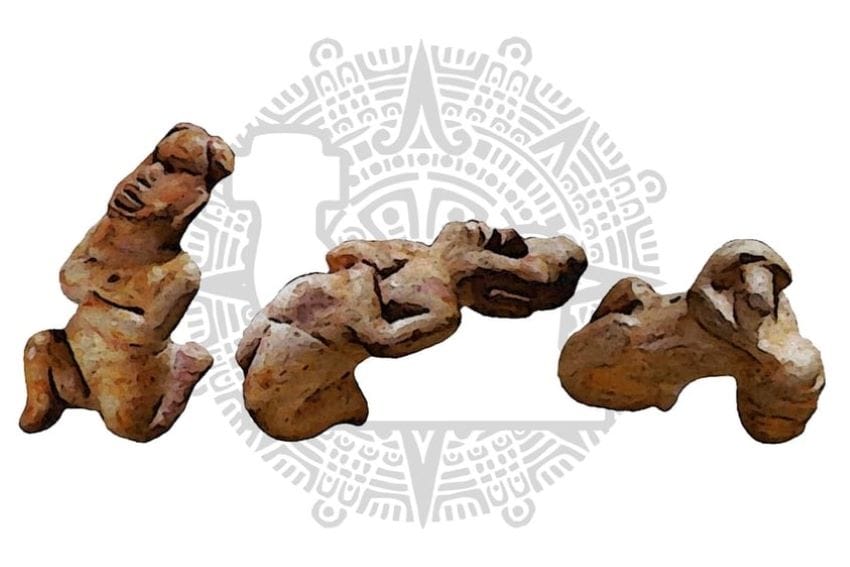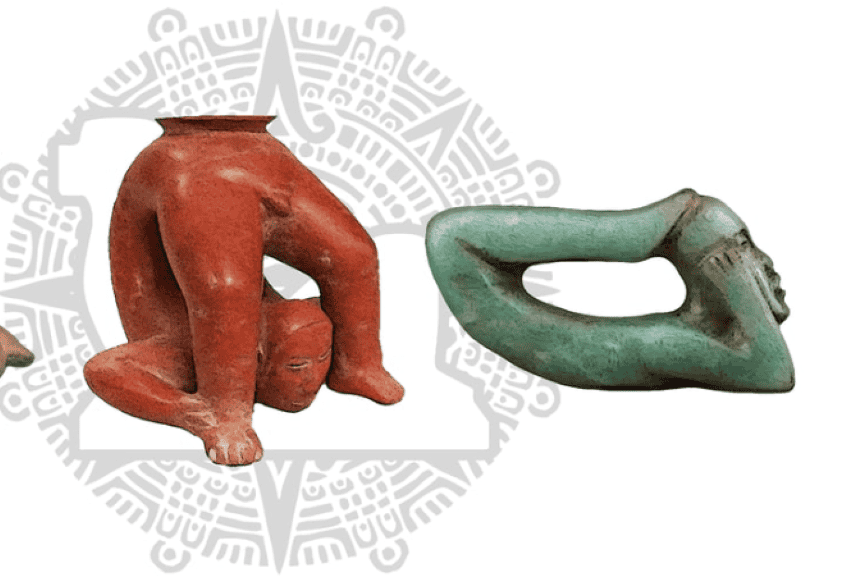We live in a world where uncertainty and change abound, while rapid technological advancement ironically both expands and inhibits human connection. While several of these advancements have improved the state of the world to some degree, the negative consequences have humans facing an increasing lack of community, isolation from nature and one another, rootlessness, and disconnection from self. Mental health issues are at an all-time high, loneliness has been called a world epidemic, distraction reigns, and stress is an unwelcome frequent visitor for an increasingly disillusioned population.
In response to many of the challenges posed in modern society, which are often at odds with both human nature and the natural world (see: sitting stationary at one’s desk working at a computer screen for 8 hours), a new generation is looking to ancient wisdom to provide an antidote. The past several years have seen a hopeful movement looking to indigenous practices to help solve some of the world’s biggest environmental and social problems. Described by research agency Wunderman Thompson as the “Indigenous Innovation” trend, this revival of ancient practices draws upon the ability of indigenous cultures to maintain balance with nature and instill a sense of community, purpose, rootedness, physical strength, and mental equilibrium to individuals.

Kinam – a physical practice based on ancient prehispanic Toltec wisdom – has recently gained popularity in Mexico, illuminating a path towards a more balanced and mindful existence. While Toltec mental and spiritual philosophy has previously been popularized through the teachings of authors like Don Miguel Ruiz, the physical practice of Kinam allows for a comprehensive, movement-based system that integrates bodily, emotional, and spiritual development. Kinam has drawn in individuals around the world seeking personal growth, mindfulness, physical embodiment, and deeper connection.
The Toltecs and the Origins of Kinam
The Toltecs were an advanced Mesoamerican civilization that flourished in central Mexico between the 10th and 12th centuries AD, before the Mayans and Aztecs. Predating Yoga, the practice of power postures now referred to as Kinam was based on psychophysical techniques created by the Toltec shamans of ancient Mexico.
These techniques emerged based on the shamans’ unique perspective on the world, space, and time, centered on the belief that the world was not a set of objects in space-time as we understand it, but rather a perceptual effect. The shamans believed that to understand this reality in greater depth, it was necessary to balance four factors: body, mind, emotions and vital energy. The balance between these allows practitioners to gain access to the extraordinary capabilities to live in a higher state of consciousness. In response, the shamans created power postures and the arts of meditation, recapitulation, dreaming, and self-vigilance.
The renaissance of these practices is attributed to over 20 years of research by anthropologist Frank Diaz, and is the result of an amalgamation of Diaz’s archaeological study of thousands of Toltec sculptures, codices, and murals, indicating different postures, along with oral traditions gathered from indigenous communities who have passed down knowledge & variations of the practice. More recently, additional documentation of the Toltec practices was gathered from 16th and 17th-century archives found in Sevilla, Spain, gathered from Spanish conquistadors.

Despite the fascinating breadth of academic research, the Toltec teachings are ultimately understood best through practice. Recognizing the positive impact of applying these academic findings to physical practice, former principal dancer Alejandra Cobo and Pilates expert Ana Delia Benito, together with Frank Diaz, with the support of Fundación Dondé, established the Kinam Institute to bring this ancient knowledge to the world. The Kinam practice, based on Toltec balance and power postures, incorporates modern techniques of functional movement and dance, and uses psychophysical exercises to help practitioners find center, balance, and fluidity.
The Power of Postures
The positive impact of power postures on mental states has been widely researched and documented in recent years. Social psychologist Amy Cuddy suggests that adopting “power poses” can influence not only how others perceive us but also how we perceive ourselves. According to her research, assuming high-power poses for just a few minutes can lead to increased feelings of power and confidence, as well as changes in hormone levels associated with dominance and stress reduction.
Through the practice of postures, physical movements, manual exercises, meditation, sleep training, and breathing techniques inspired by pre-Hispanic sources, Kinam seeks to promote integral harmony and a deeper rootedness. Kinam emphasizes the importance of transitioning between postures, organizing practices into challenges, series, and sequences, and providing variations based on individual capabilities.
The physical Kinam practice begins by acknowledging the cardinal directions, a nod to the Toltecs’ deep reverence for the natural world. From there, practitioners move through a series of postures and exercises designed to cultivate a sense of centeredness, balance, and fluidity – both physically and energetically.
View this post on Instagram
“Each posture represents a stage of life,” explains co-founder Ana Delia Benito. This is represented through their symbolism and meaning. For example, Sprout Pose, with its depiction of a sprouting seed, symbolizes rebirth and enlightenment, which can be associated with growth and development in a person’s life. The Root Posture, with its connection to the practitioner’s own experience and congruence, reflects the ability to incorporate achievements and learning into daily life. The Arrow Pose, with its symbolism of attention and perception, could represent a stage of focus and mental clarity. By exercising these postures, practitioners exercise their abilities to call upon these states in real life.
Embracing the Realm of Dreams
A key aspect of the Kinam practice is its incorporation of sleep and dreaming techniques. In Kinam’s symbolic framework, conscious dreaming, known as “ensueño,” plays a central role in training the practitioner’s “nahual” – their capacity for empowered action represented as vital energy. By applying willpower and intention to the dream state, Kinam teaches practitioners to command their dreams, develop focus, and the ability to plant seeds of transformation from the realm of the subconscious.
Through these conscious/awakened dreaming practices, or “ensoñar” as Kinam calls them, individuals can project their nahual, renew their vitality, and actively utilize the time spent sleeping, rather than passively accepting it. The texts emphasize that ensueño is not merely another dream, but a transformative state of consciousness that can lead to ecstatic experiences and a profound reconnection with the creative essence of existence. By mastering techniques like controlled dreaming, hand symbolism, and the management of emotional challenges, Kinam practitioners seek to unlock deeper layers of awareness and spiritual growth through the practice of conscious, intentional dreaming.
Accessing the Unseen
While the practice of Kinam offers a practical psychophysical way of interacting with the world and oneself, it also incorporates an exploration of energy work. With principles similar to chakra centers, Kinam implements practices to shift energy within the body, such as transforming or moving stagnant energy to revitalize and motivate. Furthermore, by engaging in static positions that compress certain glands to induce specific, focused perceptual states, Kinam allows practitioners to access states of consciousness outside of our normal purview. “Through these techniques, we can expand other faculties of humanity, including perception of the often hidden or unseen aspects of reality” says Benito.

Reconnecting with Toltec Wisdom
“Toltec” is a way of being, says Ana Delia Benito. “We can all be Toltec.”
Whether you’re seeking to deepen your own physical, emotional, and spiritual practice, or are a teacher looking to expand your offerings, Kinam presents an intriguing opportunity to reconnect with ancient Toltec wisdom in a modern context.
“Kinam is for anyone interested in reconnecting with their physical body, vital energy, and internal wisdom,” the Kinam Institute states, “as well as teachers of practices such as Yoga, Chik kung, and functional training, who wish to complement their teaching.”
While Kinam has enjoyed a spread throughout world cities from Mexico City to Los Angeles, in Mexico, classes are offered at Agoralucis in Polanco, Mexico City, as well as online through the studio. The Instituto Kinam also offers a six-module certification program, enabling you to become a Kinam practitioner and train others.
In a world that often feels disconnected and out of balance, the revival of Toltec practices like Kinam offers a powerful antidote. By reconnecting with ancient wisdom, Kinam provides a holistic path toward greater harmony, embodiment, spiritual growth, and awakened capabilities. As we navigate the challenges of modern life, the Toltec way of Kinam stands as a beacon, guiding us back to a more balanced and mindful existence.
Monica Belot is a writer, researcher, strategist and adjunct professor at Parsons School of Design in New York City, where she teaches in the Strategic Design & Management Program. Splitting her time between NYC and Mexico City, where she resides with her naughty silver labrador puppy Atlas, Monica writes about topics spanning everything from the human experience to travel and design research. Follow her varied scribbles on Medium at https://medium.com/@monicabelot.
